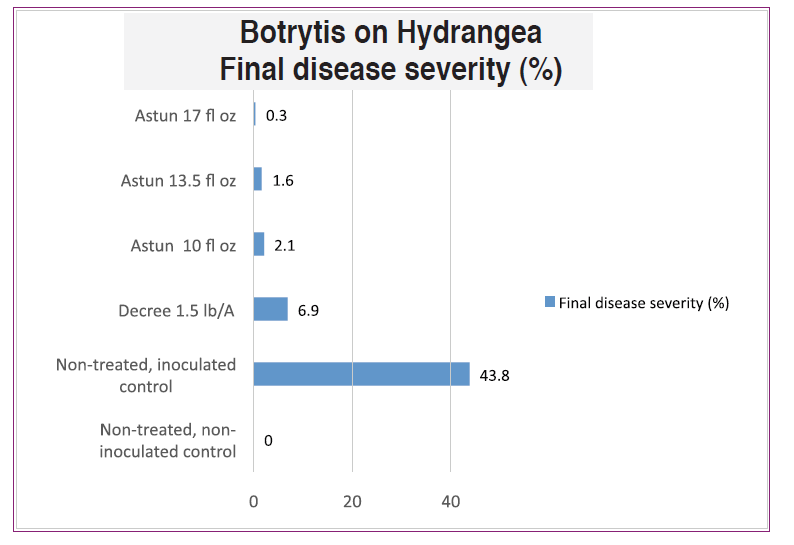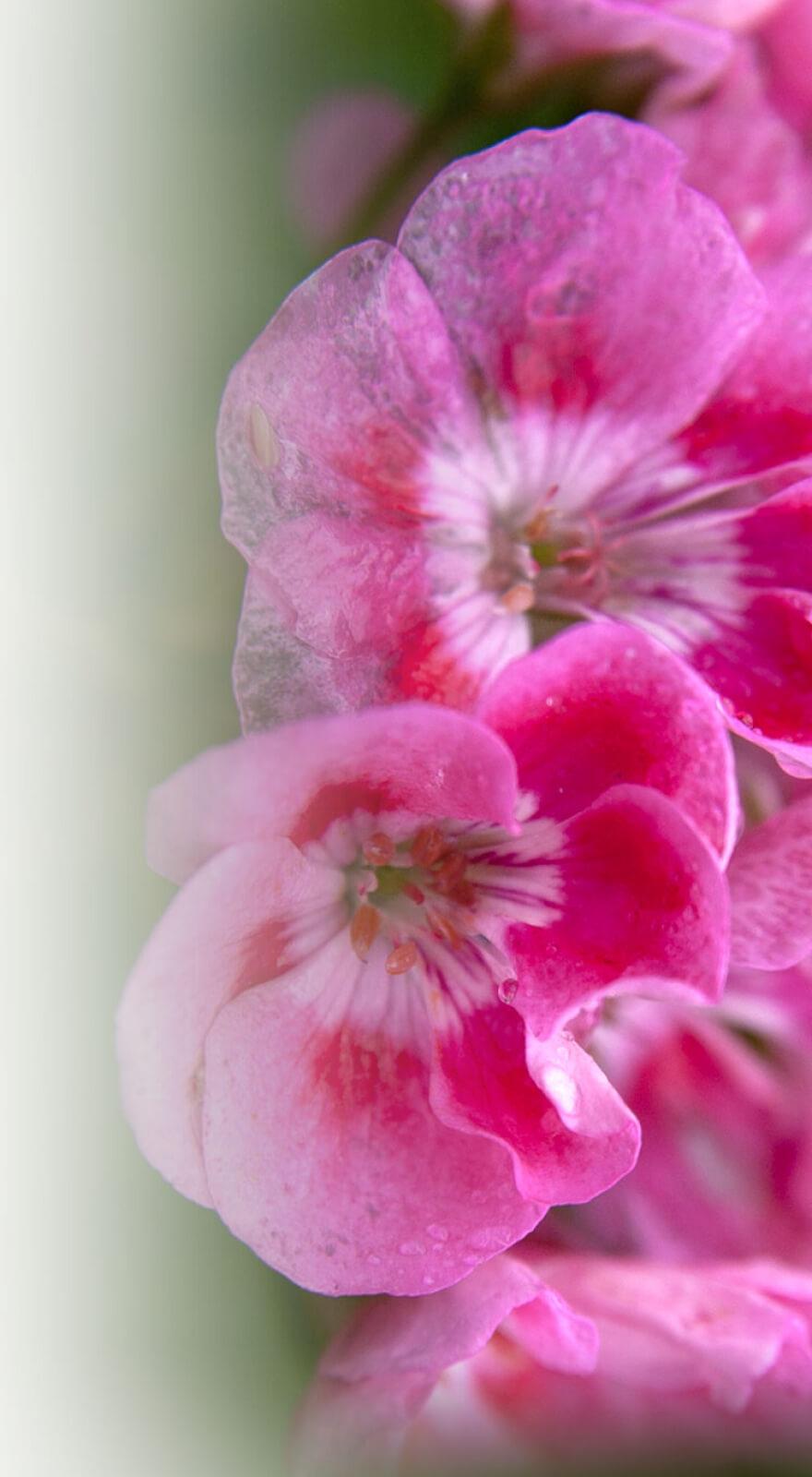Knowde Enhanced TDS
Identification & Functionality
- Agrochemical Functions
- Technologies
- Product Families
- Composition
ACTIVE INGREDIENT Isofetamid * 36.0% OTHER INGREDIENTS 64.0% TOTAL . 100.0% N-[1,1-dimethyl-2-[2-methyl-4-(1-methylethoxy)phenyl]- 2-oxoethyl]-3-methyl-2-thiophenecarboxamide Contains 3.33 pounds Isofetamid per gallon (400 grams per liter).
Features & Benefits
- Agrochemicals Features
- Product Highlights
Depending on disease risk and severity, users may expect protection for a period of 7 to 14 days after treatment. ASTUN contains 3.33 pounds of isofetamid per gallon (400 grams per liter).
- Commo n Name:
- Isofetamid Class: SDHI
RESTRICTED ENTRY INTERVAL AND SIGNAL WORD
- REI: 12 hours
- Signal Word: Caution
- EPA Reg. No. 71512-23-59807
- EPA Est. No. 1022-TN-001
- Benefits
- Preventative, systemic and curative
- Rapid rain-fastness allows for efficient foliar applications.
- Foliar applications
- Protects against botrytis
- Excellent rotational solution as part of a botrytis control program
- Easy-to-use flowable suspension concentrate formulation allows the user to custom mix their preferred tank mix partner depending on the diseases present.
- Product Info
ASTUN is a broad-spectrum fungicide with preventative, systemic and curative properties for the control of diseases on ornamental plants. ASTUN should be used in a regularly scheduled preventative spray program and used in rotation with products with a different mode of action. For control of other diseases not listed on this label, ASTUN may be tank mixed with other fungicides. Tank mixes should follow the use instructions on both labels for application rate and application timings. Failure to follow these instructions may result in inferior disease control and/or phytotoxicity. Although ASTUN has been evaluated on several ornamental cultivars, varieties and hybrids with no indication of phytotoxicity, neither the manufacturer nor seller have determined adequate tolerance under all conditions. The user should determine if ASTUN can be used safely for commercial use by applying the labeled rate to a small test area under conditions to be expected and monitor for adverse effects before applying ASTUN to the targeted area.
USE RESTRICTIONS
- Do not apply more than 2.65 lbs. ai per acre per year on ornamental plants.
- Do not apply ASTUN by aerial application.
- Intended for use only by professional application
Applications & Uses
- Markets
- Applications
- Application Technique
- Fungicide Target Species
- Mode Of Action
ASTUN is a member of the SDHI (Succinate dehydrogenase inhibitors) class, MOA group 7. It affects the mitochondrial transport chain.
- Use Sites
ASTUN may be applied to ornamentals and bedding plants grown in greenhouses, and outdoor nurseries.
DISEASES CONTROLLED
- Botrytis cinerea (Gray mold)
- Application Rates
Foliar spray: Applications of fungicides should begin when conditions are favorable for disease development or when plants first exhibit disease symptoms, from germination to mature crop. Use another fungicide with a different mode of action after two ASTUN applications.
Botrytis cinerea (Gray Mold)
Rate: 10 to 17 fl. oz. per 100 gallons 7 to 14 day interval.
Do not make more than two consecutive applications of ASTUN or other Group 7 containing fungicides before rotating to a registered fungicide with a different mode of action.
NOTE
Applications should be made prior to disease development and should be made in conjunction with good cultural management practices. Use the higher rate when disease risk is high. Under some conditions, the use of adjuvants and/or surfacants may improve performance
- Application Rates
Foliar spray: Applications of fungicides should begin when conditions are favorable for disease development or when plants first exhibit disease symptoms, from germination to mature crop. Use another fungicide with a different mode of action after two ASTUN applications.
Botrytis cinerea (Gray Mold)
Rate: 10 to 17 fl. oz. per 100 gallons 7 to 14 day interval.
Do not make more than two consecutive applications of ASTUN or other Group 7 containing fungicides before rotating to a registered fungicide with a different mode of action.
NOTE
Applications should be made prior to disease development and should be made in conjunction with good cultural management practices. Use the higher rate when disease risk is high. Under some conditions, the use of adjuvants and/or surfacants may improve performance.
ASTUN may not be used through pressurized drip (trickle) systems or micro-irrigations systems such as spaghetti-tube or individual tube irrigation, or ebb and flow systems
- Tank Mixing
To determine the physical compatibility of ASTUN with any other product, use a small container to mix a small amount of spray solution, containing all ingredients in the same order and ratio as the anticipated use. If any indication of physical incompatibility develops, do not use and discard. Indications of physical incompatibility usually appear within 5-15 minutes of mixing.

- Directions For Use
It is a violation of Federal law to use this product in a manner inconsistent with its labeling.
DO NOT apply this product in a way that will contact workers or other persons, either directly or through drift. Only protected handlers may be in the area during application. For any requirements specific to your State or Tribe, consult the agency responsible for pesticide regulation.
FAILURE TO FOLLOW THE USE DIRECTIONS AND PRECAUTIONS ON THIS LABEL MAY RESULT IN PLANT INJURY OR POOR DISEASE CONTROL.
ASTUN™ is a flowable suspension concentrate for control of diseases on ornamental plants. Intended for use only by professional applicators
- Agricultural Use Requirements
Use this product only in accordance with its labeling and with the Worker Protection Standard, 40 CFR Part 170. This Standard contains requirements for the protection of agricultural workers on farms, forests, nurseries, and greenhouses and handlers of agricultural pesticides. It contains requirements for training, decontamination, notification, and emergency assistance. It also contains specific instructions and exceptions pertaining to the statements on this label about personal protective equipment (PPE), and restricted-entry interval. The requirements in this box only apply to uses of this product that are covered by the Worker Protection Standard.
DO NOT enter or allow worker entry into treated areas during the restricted entry interval (REI) of twelve (12) hours.
PPE required for early entry into treated areas that is permitted under the Worker Protection Standard and that involves contact with anything that has been treated, such as plants, soil, or water, is: coveralls, chemical resistant gloves made of any waterproof material, shoes plus socks.
Sod and seed farms, commercial greenhouses and nurseries are within the scope of the Worker Protection Standard.
- Non-Agricultural Use Requirements
The requirements in this box apply to uses of this product that are not within the scope of the Worker Protection Standard for agricultural pesticides, 40 CFR Part 170. The WPS applies when this product is used to produce agricultural plants on farms, forests, nurseries, or greenhouses. Turfgrasses on golf courses and other non-residential turf areas such as industrial parks, tank farms, professionally managed college and sports fields, commercial lawns and ornamental landscapes are not within the scope of the Worker Protection Standard. Keep children, pets, and unprotected persons out of the treated area until sprays have dried.
Technical Details & Test Data
- Products Labeled
OHP Products Labeled for Control of Botrytis
OHP Products Chemical Class MOA Group Residual REI Astun® SDHI 7 7 to 14 days 12 OHP Chipco® 26019 Dicarboximides 2 7 to 14 days 12 OHP 6672® 50WP or OHP 6672® 4.5F Benzimidazoles 1 7 to 14 days 12 Triathlon® BA Biofungicide unknown 7 to 14 days 4 OHP Suggested Recipe for Botrytis Control
Application Rate per 100 gallons Rate per gallon Remarks Astun® 13.5 fl. oz. 4.0 mL After 2 consecutive sprays rotate to another fungicide with a different MOA. OHP Chipco® 26019 1 lbs. 4.5 grams Use shorter intervals under heavy disease pressure. Triathlon® BA 4 quarts 38 mL Use shorter intervals under heavy disease pressure. OHP 6672® 50WP or OHP 6672® 4.5F 16 oz. 14.5 fl. oz. 3 tsp (WP) 4.5 grams 1 tsp (F) 4.35 mL Addition of a spreader sticker additive may improve control Program remarks Repeat spray program if disease or conditions continue. Under high disease pressure a spray interval of no more than 7 days is suggested. Under lighter pressure schedule may be reduced to 14 days.
Safety & Health
- Personal Protective Equipment (Ppe)
Applicators and other handlers must wear long-sleeved shirt and long pants, socks, shoes, and chemical resistant gloves made of any waterproof material. Follow manufacturer’s instructions for cleaning/ maintaining PPE. If no such instructions for washables, use detergent and hot water. Keep and wash PPE separately from other laundry.
Applicators and other handlers must wear:
- Long-sleeved shirt
- Long pants
- Chemical-resistant gloves made of any waterproof material
- Shoes plus socks
- Precautionary Statements
HAZARDS TO HUMANS AND DOMESTIC ANIMALS
CAUTION
Harmful if swallowed or absorbed through skin. Avoid contact with skin, eyes or clothing. Wash thoroughly with soap and water after handling and before eating, drinking, chewing gum, using tobacco or using the toilet. Remove and wash contaminated clothing before reuse.
- User Safety Recommendations
- Wash hands before eating, drinking, chewing gum, using tobacco or using the toilet
- Remove clothing/PPE immediately if pesticide gets inside. Then wash thoroughly and put on clean clothing.
- Remove PPE immediately after handling this product. Wash the outside of gloves before removing. As soon as possible, wash thoroughly and change into clean clothing.
- Environmental Hazards
This pesticide is toxic to oysters. DO NOT apply directly to water, or to areas where surface water is present or to intertidal areas below the mean high water mark. DO NOT contaminate waters when disposing of equipment washwaters or rinsate. Do not apply when weather conditions favor drift from the treated areas. Drift and runoff may be hazardous to aquatic organisms in water adjacent to treated areas.
AVOIDING SPRAY DRIFT AT THE APPLICATION SITE IS THE RESPONSIBILITY OF THE APPLICATOR. The interaction of many equipment-and-weather-related factors determine the potential for spray drift. The applicator is responsible for considering all these factors when making decisions. Where states have more stringent regulations, they must be observed.
Packaging & Availability
- Packaging Type
- Packaging
- 1 quart (32 fl. oz.), 4 per case
Storage & Handling
- Storage And Disposal
DO NOT contaminate water, food or feed by storage or disposal.
PESTICIDE STORAGE: Store in original container, in a secured, dry, cool place separate from fertilizer, food, and feed. Avoid cross-contamination with other pesticides.
PESTICIDE DISPOSAL: Pesticide wastes may be hazardous. Improper disposal of excess pesticide, spray mixture or rinsate is a violation of Federal law. If these wastes cannot be disposed of by use according to label instructions, contact your State Pesticide or Environmental Control Agency or the Hazardous Waste representative at the nearest EPA Regional Office for guidance.
CONTAINER HANDLING: Nonrefillable container. DO NOT reuse or refill this container. Triple rinse container (or equivalent) promptly after emptying. Triple rinse as follows: Empty the remaining contents into application equipment or a mix tank and drain for 10 seconds after the flow begins to drip. Fill the container ¼ full with water and recap. Shake for 10 seconds. Pour rinsate into application equipment or a mix tank or store rinsate for later use or disposal. Drain for 10 seconds after the flow begins to drip. Repeat this procedure two more times. Then offer for recycling if available, or puncture and dispose of in a sanitary landfill, or by incineration or, if allowed by state and local authorities, by burning. If burned, stay out of smoke.

